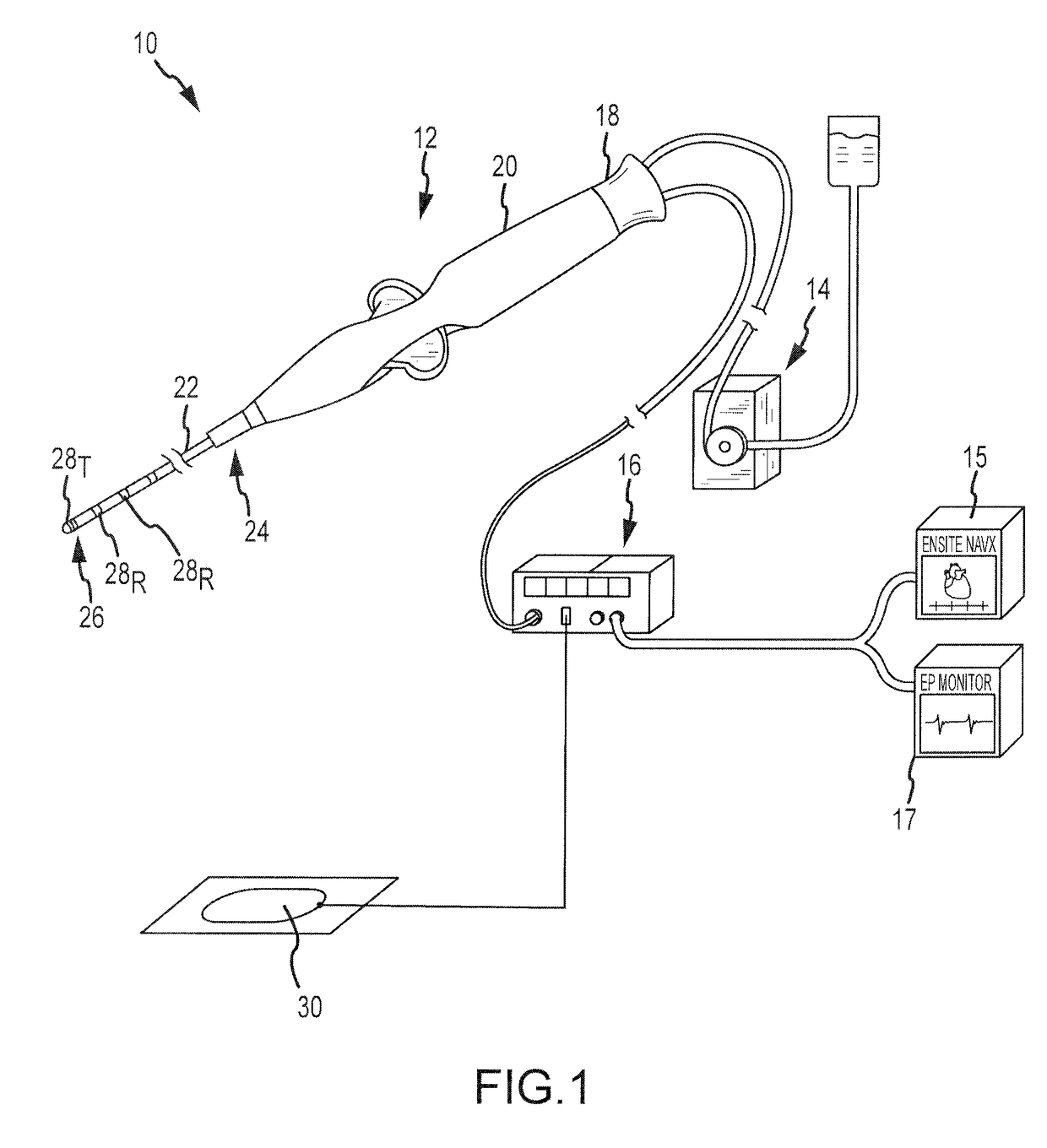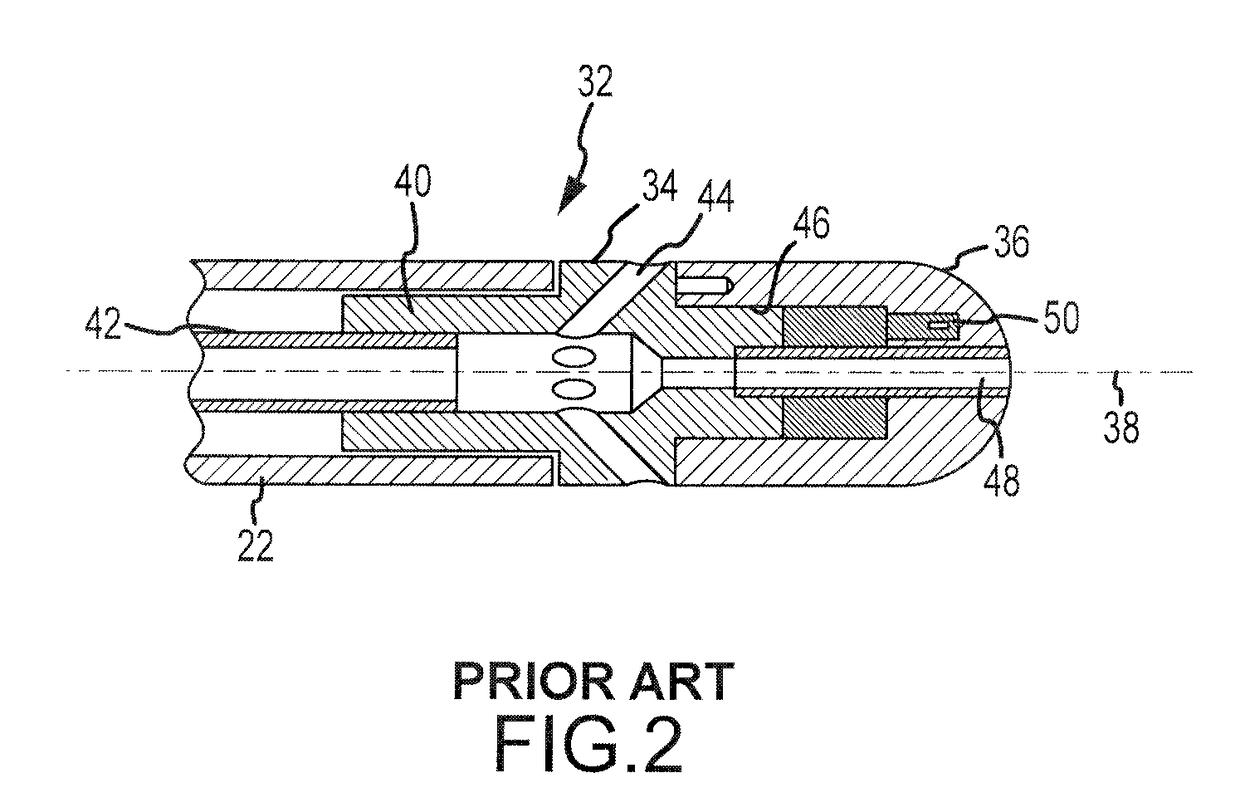Irrigated ablation electrode assembly having off-center irrigation passageway
a technology of electrode assembly and irrigation passageway, which is applied in the field of irrigated ablation catheters, can solve the problems of less than ideal off-center positioning of thermal sensors, unsatisfactory or excessive tissue damage, and difficult to accurately monitor and control the ablative process, so as to improve the ability to monitor temperature and more consistent, improve the effect of temperature monitoring performance and no significant impairment of the distal tip irrigation capability
- Summary
- Abstract
- Description
- Claims
- Application Information
AI Technical Summary
Benefits of technology
Problems solved by technology
Method used
Image
Examples
second embodiment
[0039]FIGS. 4A-4B illustrate the inventive distal electrode assembly, which is referred to in the drawings as assembly 52′. The assembly 52′ is similar to the assembly 52, and thus only the differences will be described. The assembly 52′ extends the principle of an off-center irrigation passageway with an opening that is offset in distance from the center axis to a dual passageway embodiment, and which further uses an on-center temperature sensor (in contrast to the near center location for the thermal sensor in the embodiment of FIGS. 3A-3B). The distal irrigation passageways include a first irrigation passageway 60′1 and a second irrigation passageway 60′2. Each one of the passageways 60′1, 60′2 are offset from the center axis 58. As shown in FIG. 4A, each passageway 60′1, 60′2 is generally straight, extending along its own longitudinal axis, which longitudinal axis intersects and forms an acute angle θ with respect to the center axis 58. The acute angle θ may assume a wide range ...
third embodiment
[0043]FIGS. 5A-5B illustrate the inventive distal electrode assembly, which is referred to in the drawings as assembly 52″. The assembly 52″ is similar to assemblies 52 and 52′, and thus only the differences will be described. The assembly 52″ likewise embodies the principle of off-center distal irrigation passageways having respective openings that are offset in distance from the center axis combined with an on-center temperature sensor. The distal irrigation passageways include a first irrigation passageway 60″1 and a second irrigation passageway 60″2 having respective distal openings 62″1, 62″2. (FIG. 5B) that are offset in distance from the center axis. The first and second passageways 60″1, 60″2 are also offset from the center axis 58. As shown in FIG. 5A, each passageway 60″1, 60″2 has a respective, generally straight first portion 102, which extends along its own longitudinal axis, which longitudinal axis forms an acute angle θ′ with axis 58. Each passageway 60″1, 60″2 furthe...
PUM
| Property | Measurement | Unit |
|---|---|---|
| angle | aaaaa | aaaaa |
| acute angle | aaaaa | aaaaa |
| temperature | aaaaa | aaaaa |
Abstract
Description
Claims
Application Information
 Login to View More
Login to View More - R&D
- Intellectual Property
- Life Sciences
- Materials
- Tech Scout
- Unparalleled Data Quality
- Higher Quality Content
- 60% Fewer Hallucinations
Browse by: Latest US Patents, China's latest patents, Technical Efficacy Thesaurus, Application Domain, Technology Topic, Popular Technical Reports.
© 2025 PatSnap. All rights reserved.Legal|Privacy policy|Modern Slavery Act Transparency Statement|Sitemap|About US| Contact US: help@patsnap.com



